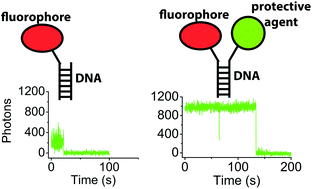Intra-molecular triplet energy transfer is a general approach to improve organic fluorophore photostability
Abstract
Bright, long-lasting and non-phototoxic organic fluorophores are essential to the continued advancement of biological imaging. Traditional approaches towards achieving photostability, such as the removal of molecular oxygen and the use of small-molecule additives in solution, suffer from potentially toxic side effects, particularly in the context of living cells. The direct conjugation of small-molecule triplet state quenchers, such as cyclooctatetraene (COT), to organic fluorophores has the potential to bypass these issues by restoring reactive fluorophore triplet states to the ground state through intra-molecular triplet energy transfer. Such methods have enabled marked improvement in cyanine fluorophore photostability spanning the visible spectrum. However, the generality of this strategy to chemically and structurally diverse fluorophore species has yet to be examined. Here, we show that the proximal linkage of COT increases the photon yield of a diverse range of organic fluorophores widely used in biological imaging applications, demonstrating that the intra-molecular triplet energy transfer mechanism is a potentially general approach for improving organic fluorophore performance and photostability.


 Please wait while we load your content...
Please wait while we load your content...